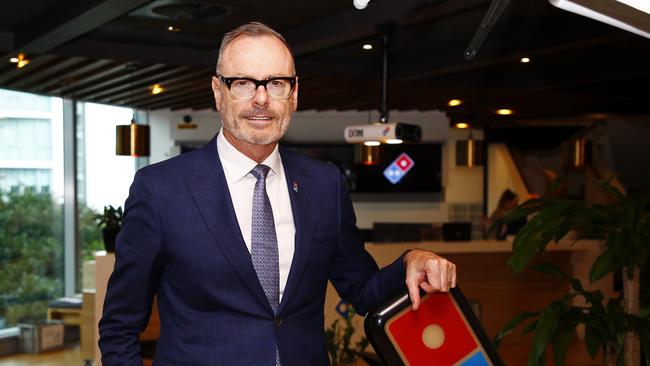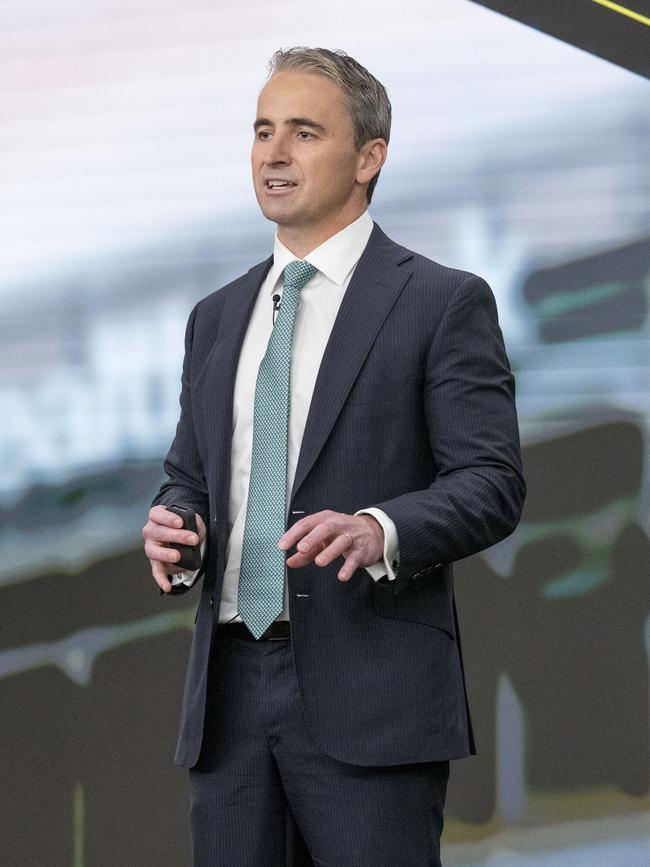
The long-serving Domino’s boss saw his annual pay last year halve to $1.56m after losing up to $1.38m in short-term bonus payments and an even bigger chunk of share-based payments designed to vest over the long term.

Unlike Domino’s, Australian bosses in general have done well over the past year. Executive pay rose in the latest profit reporting season as earnings rebounded helped by higher commodities or an economy roaring back to life.
The pay rises reflects the bigger “at risk” component of executive pay. Australian boards are generally paying a greater proportion of salary in the form of bonuses (both short and long-term) and these are increasingly paid using shares. In short, as the company does well this generally flows through to CEO pay.
But in the world after Covid-19 boards are grappling with the time bomb that long-term bonus plans represent, with many schemes delivering the special sauce for executives that have waited long enough.
Indeed, long-term pay deals struck sometimes years before the pandemic hit are now translating to massive windfalls just as companies are calling for wage restraint among their own workers.
In some cases, such as Qantas, the share-based bonus schemes were thrown at executives during the depths of the Covid-19 crisis to save on cash-based payments, but they will soon start to deliver big returns.

Long-term payments came to a head in the case of the Commonwealth Bank chief executive Matt Comyn, who last month warned of a “wage-price spiral” as a concern for the economy. The same day the bank’s remuneration report showed Comyn's $6.97m pay packet for 2022 had jumped from $5.17m a year earlier. Much of the gain was from deferred equity payments awarded in recent years being released.
Being the CEO of one of the world’s top 10 banks isn’t as lucrative as it used to be. In his final year as chief executive in 2011, former Commonwealth Bank boss Ralph Norris took home $8.6m. A year earlier Norris was paid a whopping $16.2m.
Even in a bumper year for profits and shareholder returns, Comyn’s pay was outgunned by dozens of other Australian executives, including the bosses of the two big Australian supermarkets.
At the checkout
Woolworths chief Brad Banducci took home $7.56m last year, down slightly from $8.37m a year earlier. Much of the drop in pay relates to Banducci’s short-term bonus being docked following the emergence of nearly $600m in underpayments across Woolworths’ payroll, going back years.
Steven Cain of Coles fared better, enjoying a jump in pay to $7.25m from $6.69m a year earlier. But he missed out on getting a higher potential bonus due to cost overruns in Coles’ warehouse automation project. A fall in customer satisfaction because of supply chain squeezes also hurt Cain’s short term prospects. Still, it was softened by nearly $3m in long-term bonus awards which vested under a performance program put in place back in 2019.

Former Fortescue chief Elizabeth Gaines saw her remuneration jump to $7.9m in the year to end-June from $5.7m a year earlier. The mining CEO, who retired last month, fell short on some potential bonus measures, including the ramp-up of the Iron Bridge expansion, which came in over budget. Fortescue is one of the first major companies to build green targets into the CEO bonus structure, including reduction of annual carbon emissions.
Another boss facing more explicit targets is Qantas’s Alan Joyce, who will this year see a bigger proportion of his short-term bonus payment tied to the experience of customers. This follows a year of anger directed at the airline for cancellations, late flights and lost bags as they recover from the Covid-19 groundings and border closures. Future bonus payments will be tied to customer measures such as net promoter score, external reputation and punctuality. The move acknowledges “our need to do more to deliver the service our customers expect”, the airline said.
Flying high
For the first time Qantas is also introducing green targets into executive pay structure as the airline seeks to hit net zero by 2050. This will include progress on cutting emissions by 25 per cent by the end of this decade.
There’s a lot going on beneath the surface of Qantas’s latest executive pay review, which saw Joyce paid $2.15m in cash last year. But the Qantas boss was also given an additional $3.27m worth of long term share-based bonus payments, which will vest in coming years. Combined, this delivered Joyce $5.57m for the past year, up from $5.28m a year earlier.
More than a decade at the top of Qantas has seen Joyce emerge in the top 20 shareholder list for Qantas with a holding worth more than $15m.

Investors should brace for Joyce experiencing a sharp jump in pay this current financial year, given the airline will resume paying short-term bonuses after two years of Covid-19-linked freezes. However, Joyce and his executives still qualified for a “Recovery Retention Plan” which will deliver millions of dollars worth of shares by August next year if cost savings and debt targets are met. Qantas investors will soon be asked to approve Joyce’s participation in the Recovery Retention Plan, which for the CEO is currently valued in the airline’s books at more than $4.3m. Joyce also voluntarily delayed until August next year the payment of millions of dollars of shares in long-term bonuses that were awarded before the pandemic and are also set to vest.
Final details about the payments won’t be seen until Joyce retires or Qantas’s 2024 annual report is released.
Elsewhere, biotech giant CSL delivered chief executive Paul Perreault $14.4m, putting him among the highest paid of the ASX chief executives. This was down slightly from the previous year’s $14.75m, with the difference being more than $10m of longer-term bonuses during the year.
Perreault, who spends half his time in the US, still got more than $4.3m in cash bonus payments for hitting short-term targets.
This coming year will see a 3.5 per cent increase in Perreault’s fixed salary and the potential for the CEO to earn more from long term bonus payments.
Hitting paydirt
BHP chief Mike Henry was paid the equivalent of $11m during the year, up from $10.7m a year earlier.
Henry’s short-term bonus was marked down slightly because he missed targets on female workforce participation and a shareholder return measure fell short due to production volumes coming in lower than expected. BHP’s annual report revealed that Henry’s pay ratio was 123 to 1 compared to median remuneration for all of the miner’s employees.

However, US disclosures show Henry this year enjoyed a $12.7m share windfall from a generous 2017 long-term incentive awarded long before he was named chief executive.
It’s telling that BHP has since tightened the scheme, which applied to all of the mining giant’s executives at the time, and this sees long-term potential payments cut by half.
For pizza maker Domino’s, which operates stores across Europe and Japan, the long-term bonus payments plan drawn up in early 2019 could have represented as much as $11m of shares going to CEO Meij last financial year. But the hurdles, including compounded earnings growth, weren’t met. The Domino’s boss is also likely to miss out on another potential windfall this financial year.
Indeed, under Domino’s executive remuneration plan, not one dollar in long-term payments has been paid to the CEO in the past five years, and apart from 2021, just a fraction of short-term bonus payments have been made over the same period.
This prompted talks between Domino’s board and the pizza maker’s executives in recent months on whether the current pay scheme rules were achieving their purpose “of retaining and incentivising executives”. Specifically, the executives said the scheme didn’t reflect remuneration practices in international markets. It is understood the options program for international executives had come under focus. Change is coming. In the next few weeks, Domino’s will unveil a new scheme for shareholders to consider which is expected to deliver a pay shake-up.




There is a discussion inside fast food giant Domino’s Pizza after chief executive Don Meij and a string of his senior executives missed out on most of their bonus payments last year. These “at risk” bonuses form the lucrative toppings to the base salary and can make all the difference to executive pay.